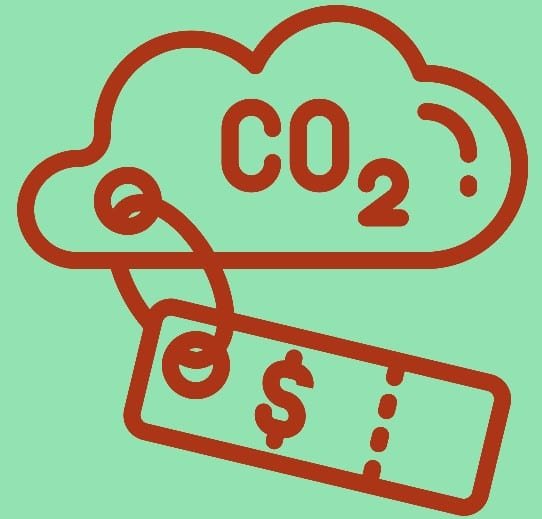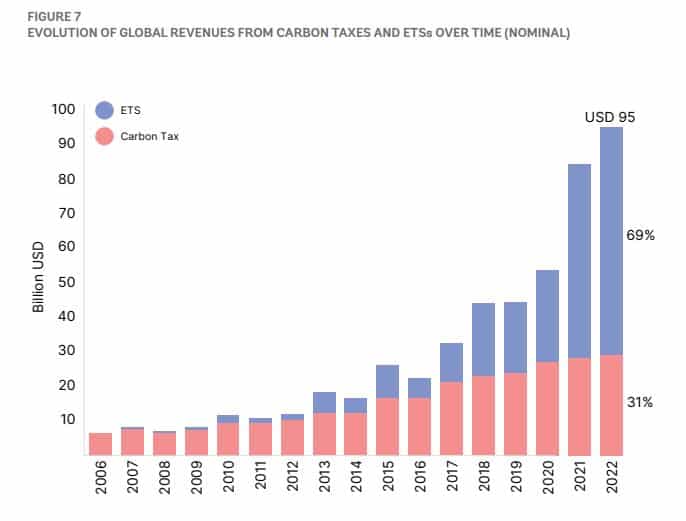As global temperatures continue to rise, the urgency surrounding climate policies has intensified, thrusting carbon pricing into the limelight of climate discussions.
The race to achieve net-zero emissions has made it imperative to understand how carbon pricing functions, its benefits, and the key trends shaping its future.
What is Carbon Pricing?
Basically, carbon pricing is a climate policy approach that governments use to regulate carbon emissions and form carbon markets. But it’s a pricing tool that’s also available in the private sector for voluntary carbon reductions.
There’s no single price that emitters should pay for each ton of CO2 they release into the atmosphere; it depends on various factors and the specific type of mechanism they follow.
The primary carbon pricing mechanisms are carbon tax and emissions trading system (ETS), also known as cap-and-trade. Other mechanisms include internal carbon pricing, Results-Based Climate Funding (RBCF), and carbon offsetting.
A carbon tax is a fixed price that emitters must pay for their carbon emissions, which typically goes up over time. It works like a sin tax wherein increasing the amount of tax on carbon discourages emitters from polluting more.
On the other hand, the government permits an entity to emit a limited amount of carbon by issuing emissions allowances. Each carbon allowance, also called carbon credit or carbon certificate, grants the holder the right to emit one ton of CO2.
Limiting the number of allowances is also putting a cap on a company’s or industry’s total emissions. These carbon credits are tradable among regulated companies, creating a market price for their carbon emissions.
The map below shows the current levels and coverage of carbon prices, including carbon taxes and ETS, in world regions.
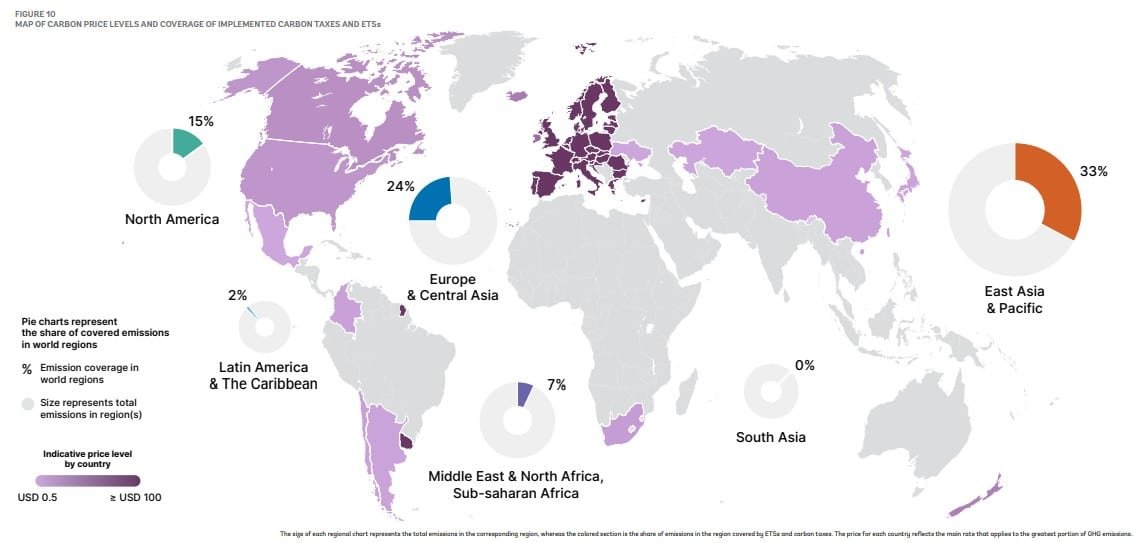
Why Put a Price on Carbon?
For many policy experts, carbon pricing is an efficient climate policy approach as it can help lower harmful emissions at the lowest possible cost.
It’s also flexible; it allows the market to decide how to reduce emissions that suit the emitter’s capacity. It’s like punishing the criminal but giving them a choice on how to pay for the crime in a way that they can afford.
Moreover, carbon pricing promotes all types of emissions reductions that cost as much as or less than the carbon price. Yet, it discourages reduction measures that are more costly.
By allowing polluters to pay the same price for their emissions, a carbon price facilitates reductions for entities that can cheaply do it. In effect, the mechanism enables the most cost-effective total emissions reductions.
And lastly, carbon pricing brings more revenue to governments and benefits the citizens. Public officials can send it back to consumers in the form of rebates or use it to fund green investments.
- According to the World Bank Carbon Pricing 2023 report, revenues from carbon taxes and ETSs jumped by >10% in 2022. The amount reached almost $95 billion globally.
Overall, the goal of pricing carbon is to force polluters to emit less CO2 and other planet-warming emissions.
Now, let’s talk about the latest trends going on in the sector globally, focusing on carbon credit prices and markets. Knowing the trends is essential for anyone wanting to take part in the global fight against climate change.
Global Trends in Carbon Prices and Markets
Carbon pricing has to continue growing, both in terms of price and coverage, to drive climate action and meet the Paris goals. That’s what the entire industry hopes for, but what are the global trends dominating the market today?
Let’s uncover the top three that every carbon market speculator must know.
Slow Yet Resilient Growth
After steep growth since 2020, carbon credit prices (ETS) started to slow down in 2022. However, it showed resilience amid various challenges happening at the macroeconomic level.
Carbon prices graced through the global energy crisis last year. In fact, half of the various pricing instruments have gone up while a third maintained steady price levels.
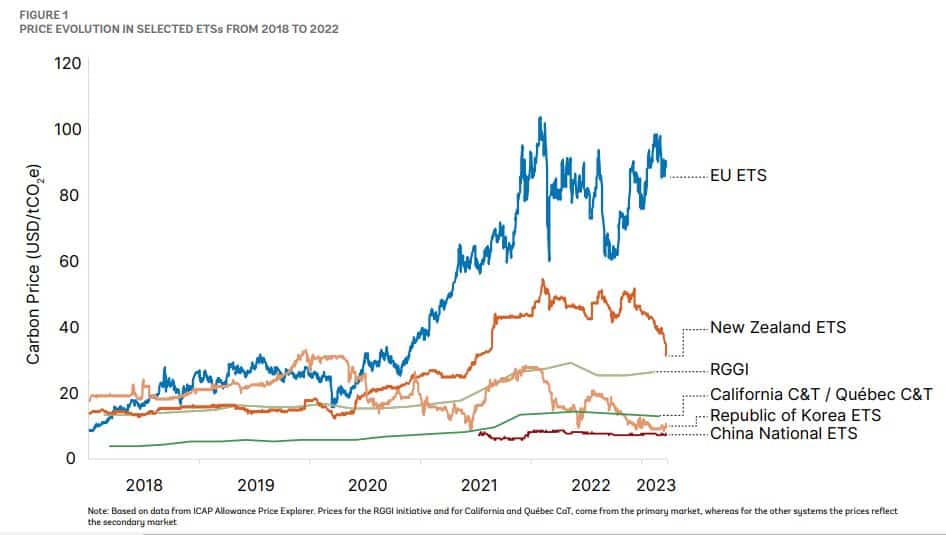
As seen above, the EU ETS experienced the biggest increase, with carbon price surging 100 Euros in February this year. However, the trend isn’t uniform as carbon prices in other ETS went down as what happened in the Korean ETS.
Demand is Mostly Voluntary
Despite its recent decline, voluntary demand for carbon credits from corporations remains the primary driver behind the market growth. Compliance demands play a small role.
Total retirements monitored by Ecosystem Marketplace decreased by over 1% to 196 million in 2022. Most of these credits retired account for voluntary demand.
But issuances from international carbon pricing mechanisms (e.g. Clean Development Mechanism) increased in 2022, accounting for 30% of the total issued credits.
The sustained dominance of voluntary demand means corporate commitments continue to grow. A survey of 500+ medium and large businesses across Europe and the U.S. found that about 90% consider carbon credits significant to offset emissions that can’t be reduced yet.
The same trend is observed among countries as more governments are considering establishing their own carbon credit schemes. These mechanisms often come alongside a carbon tax policy or an ETS.
CDR Credits Are At Premium
Carbon credit prices vary significantly, depending on the factors at play – project type, credit issuer, credit vintage, co-benefits, etc. The actual carbon price reflects project costs and buyer preferences.
As per Xpansiv CBL 2022 carbon trading data, newer vintage sells at higher prices.
Though claimed as the go-to option for carbon reduction solutions, nature-based credits’ glory seems to have reached an end. The chart shows that they have the biggest price drop, from over $15/tonne to less than $5/tonne.
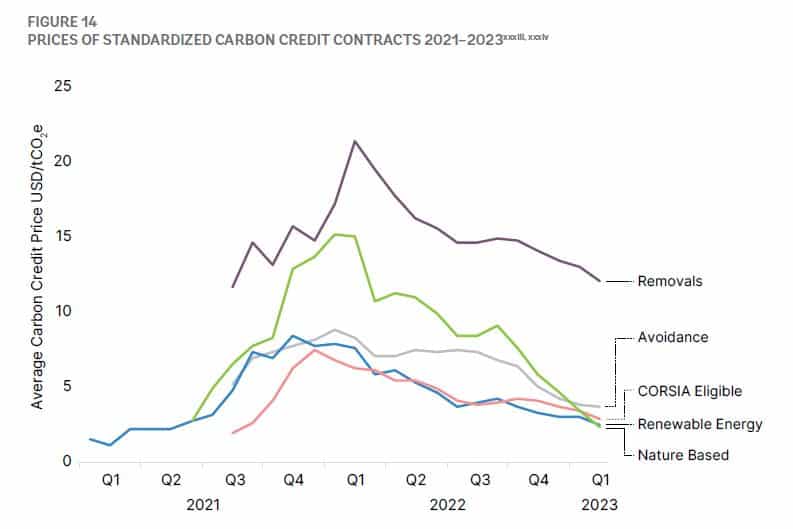
The price gap across credit types has narrowed down, with exchange-traded credits from carbon removal credits trading at a premium.
CDR credits appear to swarm the market. Carbon removal purchases have, in fact, grown insanely by 437% just for the first half of 2023. Projections show that it will rise even more as both federal funding and private investments are pouring down the CDR projects.
What Lies Ahead for Carbon Pricing
Carbon markets continue to grow in diversity and sophistication.
New service providers, advanced technological platforms and marketplaces, improved products, and new investors will further drive growth. What this means for carbon pricing is more standardization and regulations.
As per the World Bank report, there are currently 73 carbon pricing instruments, covering around 23% of global GHG emissions.
This current coverage of carbon prices is far too below what’s needed to achieve the Paris climate goals. So, the EU Commission chief Ursula von der Leyen asked government leaders at the G20 to join global carbon pricing. Leyen has been pushing hard to introduce global carbon pricing to hasten the transition to a net zero economy.
With evolving trends, growing voluntary demand, and calls for broader adoption, it becomes increasingly clear that carbon pricing is essential for driving efforts toward a sustainable and net zero future.

